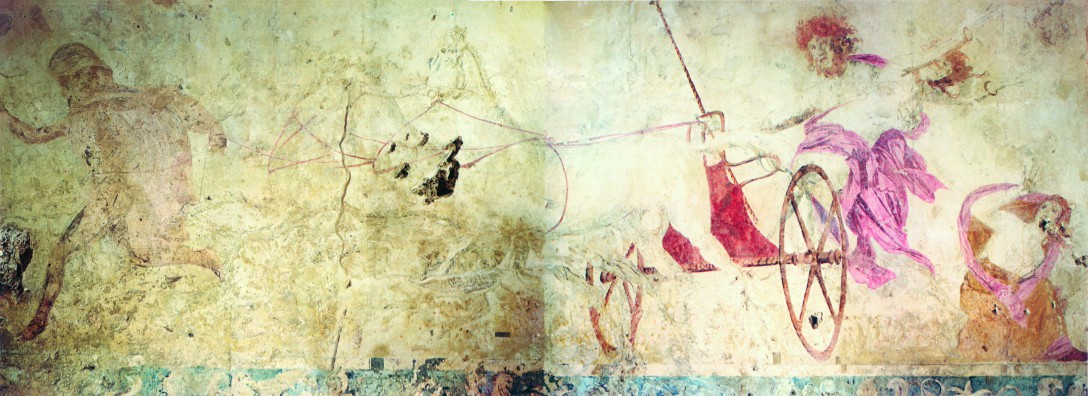
Running is my catharsis.
In August of 2014 I ran my first 5k, and this year in September I ran my first half marathon.
I placed first in girls for the 5k, and first in the women’s age division for the half marathon.
I’ve been running since sixth grade and continued up to my senior year of high school, but I was never a long distance runner. With my short limbs and small physique, my coaches and trainers told me I was built for speed, so my main events consisted of the 70m, 100m, 200m, 400m, 4 x 100m relay, and 4 x 200m relay.
I knew I didn’t have what it takes biologically to outrun several highly talented runners up to 3 years my junior who possessed inherent characteristics I simply could not compete against with my inborn bodily traits.
Out of all the events I was assigned to run, I hated the 400m the most, but now I realize I loved it the most.
The 400m is the entire loop of the track field, and I’ve had many coaches, runners, trainers, books, and online articles advising me on how to run it through a plethora of different methods.
A good friend on my high school track team once insisted that I’m supposed to give 20 percent of “everything I’ve got” in the first 50 meters, 60 percent in the next 200 meters, 80 percent in the next 300 meters, and 100 percent to the finish line.
Unbeknownst to me what “everything I’ve got” was, I understood it as it being speed, stamina, and power. But running entails so much more the than these three qualities.
At least for me, running is physical, mental, and spiritual: it’s sacred.
But even with weeks of training for the big invitational regional meet, my mental ability to think was running away from my physical ability to remember aerodynamically.
All the logistical calculations of the event so strongly advised to me from the plethora of resources I pursued disappeared with the fading line of the track as I nervously carried my block to my assigned lane, double-checking to make sure no hair ties were on my wrist, that my spikes were no than longer 9 millimeters in length, that my block, which was firmly stationed to the ground by my coach standing on top of it behind me, was measured so that my right foot is one foot further behind than my left foot.
After weeks of difficult training, I didn’t want any one of these seemingly insignificant yet on the whole vital details to disqualify me in the race.
Sometimes the weather is frigid cold and windy. Once it was so windy that they cancelled the race. The wind pushing the runners from behind would not qualify state rules to accept the runners’ times as accurate.
Sometimes it’s raining. Sometimes it’s snowing. Once it hailed. Another time it thundered, so we were moved to the the indoor gym to avoid being electrocuted. Of course, this included the spectators also.
Sometimes it’s excruciatingly warm, and the tight, black spandex running gear adds to the misery of the heat.
Then you hear the calls being made. Before the official announces his calm yet firm “runners on your mark,” I quickly prepare.
I jump up and down to slightly to loosen up my thighs and calves, roll my neck from side to side, and stretch my arms across my chest and above my head.
My heart is pounding and racing so fast it feels as if it will rip out of my chest and run away to the finish line before I will.
“On your mark,” he calls through the statically audible megaphone.
I glance behind me to see my coach standing on my block for support. I can’t smile, frown, or say anything due to nervousness, but my coach assures me with a smug smile.
My heart slows.
My coach turns around, and I turn around also, facing the finish line. I place my right foot further back, left foot closer to my head, and my knee almost touches my chest but not quite yet. It just touches when he commands “get set.”
My thumb and index finger spreads out before the white line and my arms lock behind it–they’re spread out so that its placement is about my hand’s length away from my left foot.
“Get set,” he commands.
I lift up my hips and buttocks. My head is low and leaned down toward my left foot.
I hear only my controlled, hushed breathing, escalating heart rate, and soft inner voice that reflects the official’s call verbatim.
“Go!”
The gun fires.
I run.
…
Today is November 17, 2015, and I am running my first full marathon in April.
I read in Haruki Murakami’s autobiography, What I Talk About When I Talk About Running, that running to him is often automatic. He sometimes and quite often thinks of purely nothing when he runs.
I also do this a lot. I think about nothing. My mind is a vacuum of empty space, and it’s peaceful and meditative.
But some days, particularly on bad days, I think about everything when I run. And when I run–whether it’s a slow jog or a fast sprint–I experience a catharsis.
This isn’t me running physically and mentally away from the bad, but rather the exact opposite. I face them by running toward them—jogging, sprinting, finishing, sweating, and smiling from the high of endorphins released at the end.
And this is how I experience my own, secret, sacred catharsis that no one will fully understand–I run.

